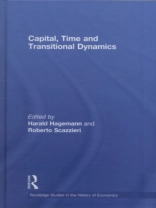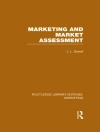In the words of Robert M. Solow traverse analysis "is the easiest part of skiing, but the hardest part of economics". The aim of this volume is to assess the state and scope of modern traverse analysis as it had been initiated by John Hicks in his pioneering contribution Capital and Time (1973). The analysis of an economy which originally had been in a growth equilibrium which was disturbed by technical progress is one of the most challenging problems in economics. This book takes Hicks’ work as the point of departure for theoretical work on the macroeconomic theory of capital dynamics along transition non-steady state paths The original contributions in this volume explore the manifold theoretical roots of traverse analysis in classical and post-classical literature, its features as a specific method of economic dynamics, and its applications in a variety of fields from monetary economics to development and international economics. The essays thereby focus on the ways ahead from Capital and Time that have been suggested and actively pursued by a number of scholars in recent years. Its central theme is the role of capital structures as critical factors in determining the actual dynamics of any given economic system. This volume is inspired by the belief that this state of affairs is not a satisfactory one, and outlines a new agenda for capital theory. Contributors include Edwin Burmeister, Jean-Luc Gaffard and Heinz Kurz.
Harald Hagemann & Roberto Scazzieri
Capital, Time and Transitional Dynamics [PDF ebook]
Capital, Time and Transitional Dynamics [PDF ebook]
Buy this ebook and get 1 more FREE!
Language English ● Format PDF ● Pages 288 ● ISBN 9780203888704 ● Editor Harald Hagemann & Roberto Scazzieri ● Publisher Taylor and Francis ● Published 2008 ● Downloadable 6 times ● Currency EUR ● ID 2299297 ● Copy protection Adobe DRM
Requires a DRM capable ebook reader












